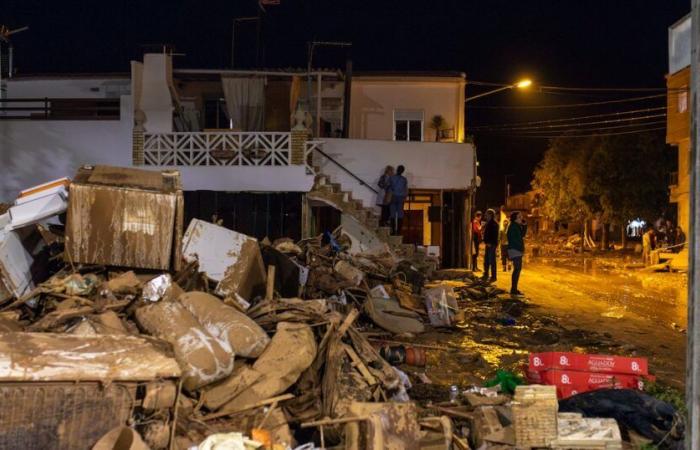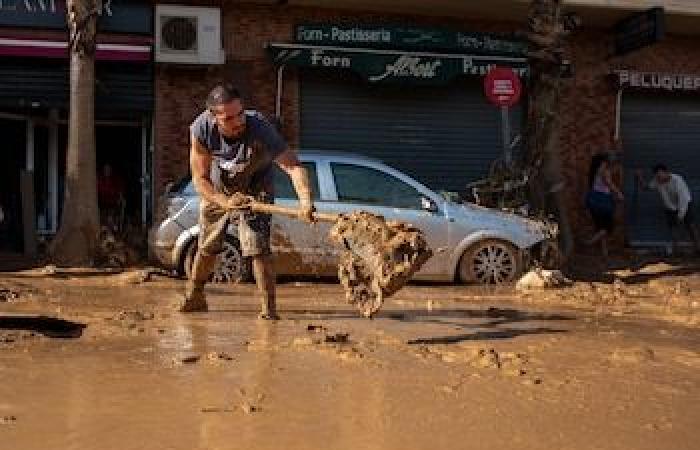The DANA which in the early hours of Tuesday the 29th to Wednesday the 30th of October has devastated a large part of eastern Spain and has caused more than 200 dead —and the figure will continue to rise, according to the authorities—and has become one of the most important natural disasters in the history of Spain. The 'hangover' of political responsibilities and the analysis of what controls failed It is just beginning, but many are already wondering why it has been so much more lethal than Hurricane Milton in Florida, a very powerful meteorological phenomenon and in an area with millions more people than in the Valencian Community, and which 'only' left 25 deceased.
What has gone wrong? The controversy is served. With the management of the regional president Carlos Mazónof the Popular Party, in the spotlight, its national leader, Alberto Núñez Feijóocame out this week to counterattack in its defense, blaming the central government and organizations that depend on it such as the State Meteorological Agency (AEMET). “I assure you that a regional president manages based on the information he receives, and the information received depends on organizations with exclusive jurisdiction of the central government, see the AEMET or the Hydrographic Confederation,” he commented. “No one can make decisions based on information that may be exact, inaccurate, improvable. Decisions are made based on the information provided to you at all times,” he added.
The AEMET responded with a statement. “The impact of a meteorological phenomenon depends on the preparation to face it and the evaluation and measures adopted by the autonomous communities. AEMET information is always available, automatically, it is not necessary to request it. (…) The AEMET notices have followed one another from Thursday October 24with informative notes and immediate updates from Tuesday, October 29.”
To clarify this controversy, it is useful to review the chronology of notices to the population both from the AEMET and from the different governments.
On Thursday, October 24, five days before After the arrival of DANA, the AEMET issued a first notice on social networks indicating that a DANA was approaching the Valencian Community and could affect the region: “A dana is approaching our environment with still a lot of uncertainty about its final position. Right now, the eastern part of the peninsula would be the area that would receive the most rain.” This was the beginning of a series of weather alerts that warned authorities and the population of the possibility of heavy rainfall in the following days.
He Friday October 25the AEMET issued a second statement, indicating that DANA would remain on the peninsula and that it would generate heavy and widespread rains, especially on the Mediterranean slope. This advance notice was the first step in raising the alert levels, which would increase as the critical date approached. That same day, it issued another alert recalling the upcoming arrival of “widespread rains in the Peninsula and the Balearic Islands, on the Mediterranean slope.” they could be very strong”.
The following days, as the weather phenomenon approached, the warnings also intensified. He Saturday October 26 in the morning, the AEMET in the Valencian Community insisted that the heavy rain scenario was most likely for Tuesday and Wednesday of the following week. By afternoon, a notice was issued regarding the risk of “torrential intensity” in the expected rains in Levante, with the recommendation that the population to remain informed and alert against possible flooding of water channels. That day the possibility of a cold drop was already mentioned, highlighting the possible arrival of “intense, extensive and persistent precipitation, It is what we popularly know as cold drop”.
He Sunday October 27the AEMET published a special notice warning that the rains could reach torrential levels on the Mediterranean coast starting Tuesday and pointing out the flood risk. By that time, local authorities already had specific warnings about the approaching extreme weather conditions. The message from the AEMET did not leave room for ambiguity: “⚠️ SPECIAL NOTICE | A dana will produce widespread rainfall in the Peninsula and the Balearic Islands until at least Thursday the 31st. ⛈️In the Mediterranean area the showers will be very strong or even torrential. Be very careful!”. and the Monday October 28th started with the Valencian Community in orange levelwhich warns of a significant meteorological risk.
On the morning of mars October 29, the AEMET declared the red alert level for several areas of Valencia from 7:36 a.m., describing the danger as “extreme”. Throughout the morning, the agency updated and expanded the red level to other areas, indicating the seriousness of the situation and warning of “torrential rains” that could cause dangerous flooding in rivers and ravines. At 9:20, the agency again called for “a lot of caution,” and recommended that the population stay away from riverbeds and low-lying flood zones.
During these hours, floods were already reported in towns such as Catadau and other areas of the province, while local authorities continued to issue warnings and recommendations.
The first reference to the topic of the president of the Generalitat Valenciana, Carlos Mazóncame that morning: “Please, caution on roads and pay close attention to the instructions of the authorities.” The AEMETfor his part, already pointed out that “the danger is significant, and even extremein some regions.” Later, Mazón, in a tweet that he later deleted, stated that the forecast was for the episode to end at six in the afternoon.
And at 20:03 hoursnearly 12 hours later After the start of the rains, all the mobile phones in Valencia rang: it was the massive Civil Protection alert to the population. “Any type of movement in the province of Valencia should be avoided,” the text said. By then, several towns were already flooded and hundreds of people were missing or trapped in their vehicles or homes.
¿Why did it take so long? between the AEMET alerts and the Civil Protection notice? The person responsible is the Generalitat Valenciana, according to the Minister of the Interior, Fernando Grande-Marlaska, who recalled that these alerts are the exclusive “responsibility” of the autonomous communities.
“In the case of DANA that has affected the Valencian Community, sending this massive alert to the population was responsibility of the Generalitatas the governments of the autonomous communities of Madrid and Andalusia already did in past emergencies of similar characteristics,” he assured.
Carlos Mazón —also at the center of criticism for his decision to discard the project to create a Valencian Emergency Unit— has replied that the system is “protocolized, standardized and coordinated” by the General Directorate of Civil defense of the Government of Spain.
And while these exchanges of statements occur, and the lack of coordination is transferred to the organization of the rescue work and help, thousands of volunteers are going to the affected areas loaded with shovels, brushes and buckets.







